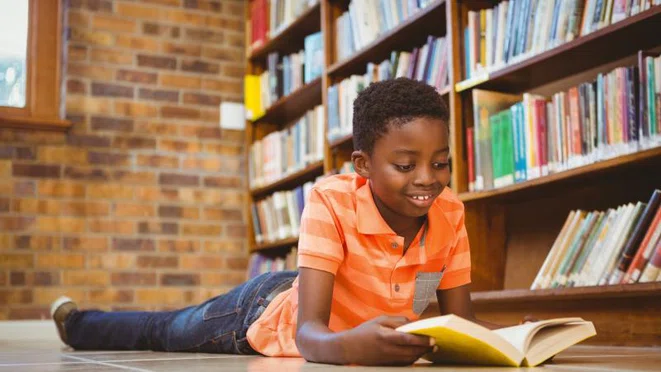
How Educators Can Have Courageous Conversations through Books
Michael Haggen
Senior Vice President, General Manager, Scholastic Literacy Pro® & Collections, Scholastic Education Solution
Evaluation Criteria: Creating a Culture, Improving Instruction, Aligning Curriculum, Closing the Gap
I will never forget my fifth year as a principal. I led a school in Michigan, in a city where the main source of income was a car factory. Eventually, a line of cars was discontinued, which led to a number of people in the area finding themselves out of work, which was hard on our school community. One of the ways we tried to support students in that moment was to surround them with rich literature that reflected characters who embodied joy, courage, and resilience—emblazoned with strength.
Our students deserved and needed to find comfort and empowerment in these stories through characters that they could relate to. My school had a very diverse student population and as principal, I made it a priority for our school to seek out books that reflected our students, particularly our young students of color. They not only needed to be able to see themselves in the books they were reading, but equally important, students of all backgrounds needed to be immersed in diverse representation in the books they’re reading to help foster a sense of empathy and understanding. In the words of Rudine Sims Bishop, “Literature transforms human experience and reflects it back to us, and in that reflection we can see our own lives and experiences as part of a larger human experience.”
Today, this mission is just as critical as it was during my days as a principal, as educators have the challenge of meeting students within the context of everything they may face outside the classroom that shapes and informs who they are. It might feel difficult to have conversations with students about what’s going on in the world around them, but I’m an ardent believer that books can help us have courageous conversations to make better sense of challenging topics. In fact, according to findings from the Scholastic “Teacher & Principal School Report,” 98% of educators agree that using books, stories, and articles as a starting point is a powerful way to engage students in important conversations.
It might feel difficult to have conversations with students about what’s going on in the world around them, but I’m an ardent believer that books can help us have courageous conversations to make better sense of challenging topics.
As author James Baldwin once said, “You think your pain and your heartbreak are unprecedented in the history of the world, but then you read. It was books that taught me that the things that tormented me most were the very things that connected me with all the people who were alive, who had ever been alive.”
In my role at Scholastic, I’ve had the privilege to see the power of story come to life firsthand through initiatives such as “Rising Voices Library,” a series of classroom library collections that celebrate the stories of the historically underrepresented—from Black and Latino boys to girls in STEAM fields—with supports for teachers to share literature and promote discussions about inclusivity and social justice that are too often lacking in classrooms. During my trips to visit different school districts throughout the country over the past few years, I’ve had teachers tell me that books in these collections like “The Border: My Journey with Papa / La Frontera: El Viaje con Papa” by Alfredo Alva and Deborah Mills have helped them find in-roads to conversations that they otherwise would not have had with their students about important topics like immigration.
Some of my favorite books like “Crown: An Ode to the Fresh Cut” by Derrick Barnes or “The Flying Girl: How Aida de Acosta Learned to Soar” by Margarita Engle spotlight positive, multifaceted experiences of people of color, while opening the door for educators to have meaningful conversations in their classrooms about inclusivity, social justice, and empathy. Amplifying stories of underrepresented voices across gender, race and ethnicity, sexual orientation, and experiences is critical in today’s classrooms, but this work must be accompanied by culturally responsive teaching practices to help facilitate respectful and engaging conversations.
Educators have much to consider on how to best support their students this academic year. Books can be the key to creating a unified classroom community built on a foundation of literacy.◼
This piece originally appeared on the Scholastic EDU blog: https://edublog.scholastic.com
This piece originally appeared on the Scholastic EDU blog: https://edublog.scholastic.com
Michael Haggen is Senior Vice President, General Manager, Scholastic Literacy Pro® & Collections, Scholastic Education Solution. In Haggen’s 25 years of academic experience, he has served as a teacher, principal, chief academic officer and direct report to superintendents. His hands-on approach has led to significant change, most recently in East Baton Rouge Parish School System, where he was deputy superintendent.
Find us on
Association of Washington School Principals
Washington Principal | Volume 3 – 2021-22


